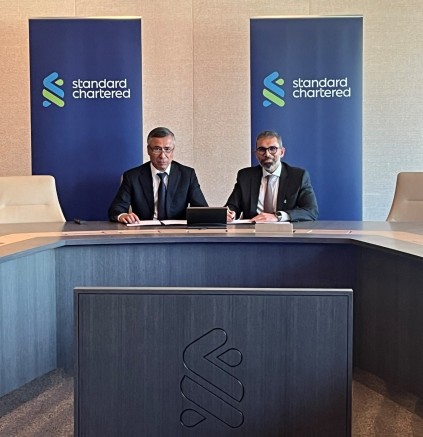Uzbekistan’s Ferghana ValleyMicro, small and medium enterprises (MSMEs) across Uzbekistan’s Ferghana Valley will benefit from a new rural enterprise development project approved on March 21 by the World Bank’s Board of Executive Directors. The project will be supported by a US$ 200 million loan from the International Bank for Reconstruction and Development (the World Bank Group’s member).
The Government of Uzbekistan has recognized the need to reform its economy and find new drivers of economic growth and is placing emphasis on accelerating private sector development to create jobs and increase income levels.
In 2017, around 78 percent of all employed individuals worked in small enterprises and more than 27 percent of all employment was in the agriculture sector. The MSME sector plays a significant role in Uzbek economy, representing close to 50 percent of the national GDP.
The Ferghana Valley is a unique part of Uzbekistan characterized by high population density with around 10 million people – or roughly 30 percent of Uzbekistan’s total population. The region is home to one quarter of Uzbekistan’s poor but at the same time has large untapped economic potential. It has some of the country’s most highly productive agricultural land, relatively high levels of industrial development and its beneficial geographic location gives it a comparative advantage in trading in agribusiness, textile, and small-scale manufacturing.
“The shift from planned to market economy in Uzbekistan will create opportunities for local small businesses in domestic and regional markets,” said Hideki Mori, World Bank Country Manager for Uzbekistan. “With nearly 49,000 micro and small firms and 84,000 commercial farms and individual entrepreneurs in Ferghana Valley, the World Bank is pleased to support this project, which will help them expand, improve profitability and create up to 20,000 new jobs.”
The project will support the delivery of technical and financial services to MSMEs across three regions of Ferghana Valley - Andijan, Ferghana and Namangan. The project will also provide technical support to groups of enterprises in rural areas for strengthening linkages in supply chains and facilitating greater market access to urban areas across Ferghana Valley, other economic clusters in other parts of Uzbekistan and Central Asia.
The project will target rural entrepreneurs in high potential sectors such as agriculture, food processing, handicraft, rural services, tourism, and small manufacturing.
The expected development results include an increase in business activity, higher rates of employment (particularly among youth and women), an increase in access to financial and advisory services for MSMEs, as well as improved supply chain linkages in targeted areas.
The World Bank supports Uzbekistan through 19 projects, totaling around $3.4 billion. These projects contribute to the country’s overall economic growth through the implementation of macroeconomic reforms; improvements of agriculture and water resources management; energy; transport; healthcare; education; urban development; and water supply and sanitation services.
Uzbekistan’s Ferghana ValleyMicro, small and medium enterprises (MSMEs) across Uzbekistan’s Ferghana Valley will benefit from a new rural enterprise development project approved on March 21 by the World Bank’s Board of Executive Directors. The project will be supported by a US$ 200 million loan from the International Bank for Reconstruction and Development (the World Bank Group’s member).
The Government of Uzbekistan has recognized the need to reform its economy and find new drivers of economic growth and is placing emphasis on accelerating private sector development to create jobs and increase income levels.
In 2017, around 78 percent of all employed individuals worked in small enterprises and more than 27 percent of all employment was in the agriculture sector. The MSME sector plays a significant role in Uzbek economy, representing close to 50 percent of the national GDP.
The Ferghana Valley is a unique part of Uzbekistan characterized by high population density with around 10 million people – or roughly 30 percent of Uzbekistan’s total population. The region is home to one quarter of Uzbekistan’s poor but at the same time has large untapped economic potential. It has some of the country’s most highly productive agricultural land, relatively high levels of industrial development and its beneficial geographic location gives it a comparative advantage in trading in agribusiness, textile, and small-scale manufacturing.
“The shift from planned to market economy in Uzbekistan will create opportunities for local small businesses in domestic and regional markets,” said Hideki Mori, World Bank Country Manager for Uzbekistan. “With nearly 49,000 micro and small firms and 84,000 commercial farms and individual entrepreneurs in Ferghana Valley, the World Bank is pleased to support this project, which will help them expand, improve profitability and create up to 20,000 new jobs.”
The project will support the delivery of technical and financial services to MSMEs across three regions of Ferghana Valley - Andijan, Ferghana and Namangan. The project will also provide technical support to groups of enterprises in rural areas for strengthening linkages in supply chains and facilitating greater market access to urban areas across Ferghana Valley, other economic clusters in other parts of Uzbekistan and Central Asia.
The project will target rural entrepreneurs in high potential sectors such as agriculture, food processing, handicraft, rural services, tourism, and small manufacturing.
The expected development results include an increase in business activity, higher rates of employment (particularly among youth and women), an increase in access to financial and advisory services for MSMEs, as well as improved supply chain linkages in targeted areas.
The World Bank supports Uzbekistan through 19 projects, totaling around $3.4 billion. These projects contribute to the country’s overall economic growth through the implementation of macroeconomic reforms; improvements of agriculture and water resources management; energy; transport; healthcare; education; urban development; and water supply and sanitation services.












